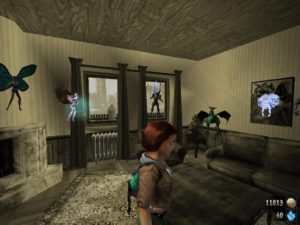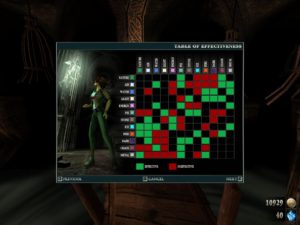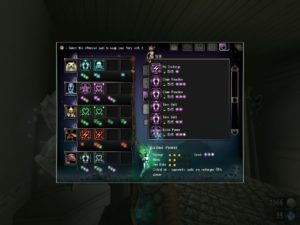Zuma
And while we’re on this end of the alphabet, I might as well look in on Zuma. Or, to give it its full title, Zuma Deluxe — this was made back when PopCap released most of their titles in two versions, a free web-based one and a downloadable Windows-native shareware version with additional features. I think Zuma was the first “deluxe” PopCap game that I actually registered, rather than just playing the demo for the hour allowed and then deleting it. 1Or possibly that was Dynomite. Heck, maybe I did them both at once.
This is because it was their first game that really seemed original, rather than a slight variation on things I had seen before. I mean, look at their catalog up to 2003. Dynomite is essentially the same game as Puzzle Bobble/Bust-A-Move, albeit with an interesting puzzle mode added on. Big Money is the same game as, er, Samegame. Alchemy is a variant of Ishido. Bookworm was admitted to be a cross between Scrabble and Bejeweled (although it always seemed to me that Boggle and Bejeweled is an apter description). Even Bejeweled itself, their flagship title, seemed to me at the time to be a mere variant of Columns. (I was quite surprised when it became a cultural touchstone, much like I was when the same thing happened with The Matrix.)
Whereas with Zuma, the most I could identify is where it stole various specific elements from. Its closest precedent is probably Dynomite, with its match-3 and explosions and gradually advancing doom, and, most particularly, with its swivelling ball-gun that fires in the direction of the mouse cursor. This mouse-based aiming, which would go on to be used in Peggle, is very important to the feel, and is the reason why I identify it as a descendant of Dynomite rather than of Puzzle Bobble.
There was a time when I thought I could see distinctive elements from other PopCap games in Zuma, but frankly, looking at it again now, all that stands out is the “match 3” aspect. Maybe I’ll remember what I was thinking of by the time I write my next post.
[UPDATE: Turns out that Zuma is no more original than the rest of PopCap’s early titles — see the comments for details. My statement that it’s not “a slight variant on something I had seen before” stands, but only because I hadn’t seen the game it was based on.]
| ↑1 | Or possibly that was Dynomite. Heck, maybe I did them both at once. |
|---|
 Comments(3)
Comments(3)

